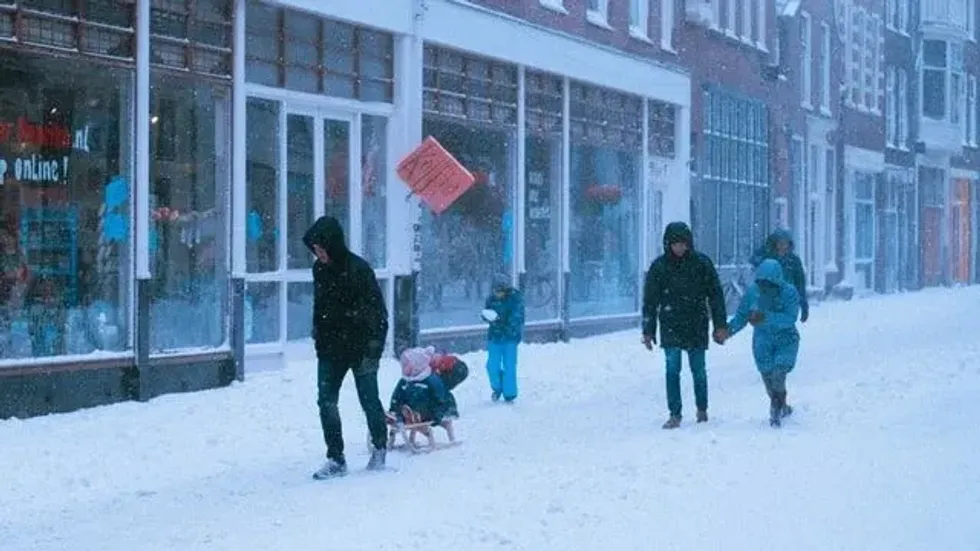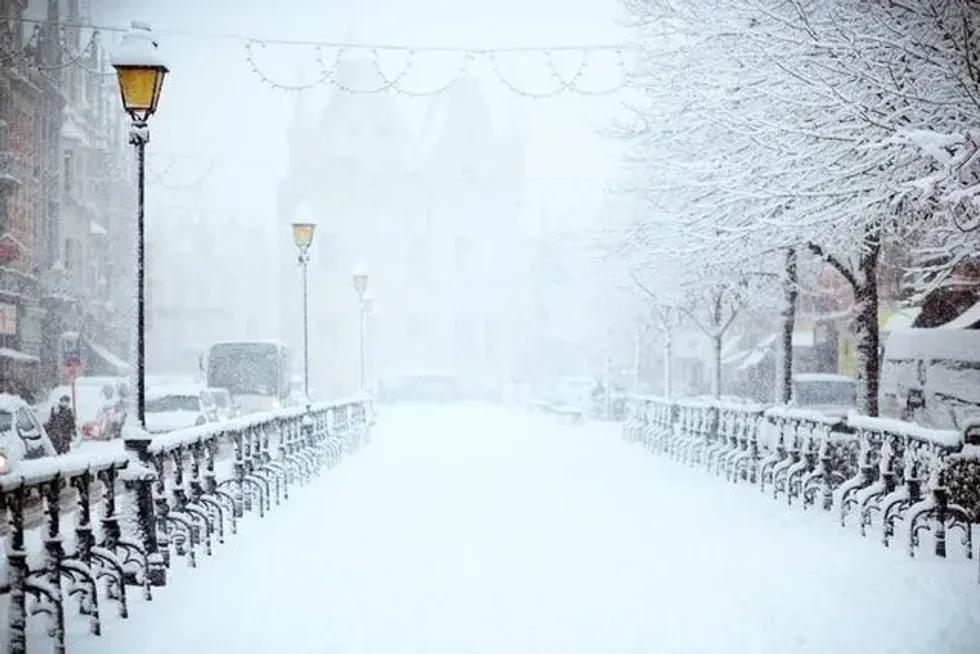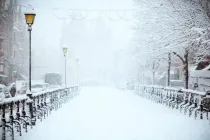73 Cold Weather Facts That Will Make Your Winters Bearable

Winter is known as the coldest season of the calendar year, and falls between autumn and spring.
The word 'winter' is believed to have originated from an old Germanic word that translates to 'time of water,' because of the snow and rain found on high latitudes. During winter, temperatures drop to an all-time low, and the air becomes chilly and unbearable.
The beginning of winter is marked with the coming of December, and the concept behind the season in European languages is related to plants dying and leaving behind their seeds, or just ceasing to grow until the next spring. During the winter, many animals also become inactive in an induced body condition known as hibernation.
Many countries around the world recognize winter as the best season because of snowfall and the fun and relaxing mood the season brings with it. Some countries also hold winter-specific events as a mode of entertainment, including activities like ice skating, ice fishing, and having a snowball fight!
Keep scrolling to learn more about cold weather and its risks.
Cold Preparation
Preparation for the cold is one of the most important parts of welcoming the winter season. People wear their winter clothes, eat warmer foods, and protect themselves from the effects of cold weather. Prepare for your next winter with these facts about cold preparation!
One of the best-known ways to stay warm during the winter season is through the use of the body's inner furnace to generate the required amount of heat from within. You can either lose weight or eat well to keep your body in shape during the lazy winter months.
Eating warmer food is suggested by some during winter. You can try soups and stews during the winter season to keep your body warm. Experiencing cold during this period is the body's way of letting you know that it requires more fuel to process energy and keep you warm.
You can also keep snug in the cold winter weather by wearing lots of layers of clothing, mostly close-fitting clothes that absorb sweat. This is important to consider if you're engaged in physical activities.
Insulation can be provided to the body using several thin layers, instead of wearing one thick layer of clothing. This method is effective if you want to stay warm, as multiple layers trap warm air in your clothes.
Physical Risks From The Cold
Cold can be a major cause of body ailments like respiratory system failure and heart attack because of a sudden shift in body temperature. These facts about physical risks caused by cold will help you learn more and stay safe.
The Great Blizzard of 1888 is known to have caused the worst death toll for a winter storm in the United States. The blizzard caused 40-50 in (101.6-127 cm) of snow to cover parts of Connecticut, New Jersey, New York, and Massachusetts.
The blizzard blocked roads and resulted in telegraph, telephone, and rail services having to stop providing services for many days. It also caused an estimated 400 fatalities, with 200 in New York alone. In addition, it resulting in the sinking of 200 ships.
The first subway system was created by Boston and New York as something of a response to the Great Blizzard of 1888.
Trips and slips are another consequence of cold weather. However, these generally are not considered to be fatal as they cause broken bones, cuts, bruises, strains, and sprains if someone slips or trips on ice. In most cases, the head and lower back are injured most often, alongside the hands and arms.
Tripping and slipping can be solved by wearing shoes that are built to handle icy conditions.
People at risk of heart attacks are advised to keep warm at all times, even at home. They can wrap up in a scarf, wear a hat, or pull on some gloves before they step out of their homes.
If you are at risk of heart issues, you should avoid standing or walking in the cold as it can tip the balance of the body and initiate a heart attack.
An estimated 100 people a year in the United States are reported to have lost their lives shoveling snow, as the combination of cold temperatures with physical labor (especially in people who are already at risk of heart issues) can increase the chances of heart attacks.
Frostbite is another critical injury that is caused by ice crystals forming inside the body, and eventually killing body cells. External frostbite is treatable but can be extremely painful, whereas deep frostbite can result in the loss of body parts like toes, fingers, or even entire limbs.
If you were to ever experience frostbite, it is recommended that you seek immediate medical attention, as leaving such an injury unattended can be lethal to the body.
Hypothermia is a serious condition associated with cold weather, and has the potential to become fatal. Hypothermia occurs when the temperature of the body drops from its normal temperature of 98.6-95 F (37-35 C) or less. The body reacts to this condition with numb extremities, shivering, reduced dexterity, or just a feeling of extreme cold.
Hypothermia can be countered by moving indoors or by covering the body with more layers of clothing.
Disease Risks Associated With Cold
Diseases associated with the cold have been prevalent since the history of humanity, and even today, cold weather affects the human body in different ways. These facts about diseases associated with cold will help you learn more.
According to the Centers for Disease Control and Prevention (CDC), winter cold is a bigger killer when compared to summer heat. Based on a 2014 study, the CDC reported an estimated 1,300 death per year from extreme cold from the years 2006 to 2010, compared to which extreme heat only caused 670 fatalities.
Cold decreases the immune response in the body, because of which less blood is supplied to the extremities of the body to store body heat in the head and torso. This blood flow reduction results in the production of fewer white blood cells, which causes the body to be susceptible to bacteria and viruses.
Feeling cold all the time is seen as a common sign of medical conditions such as anorexia and asthma.
Cold air can be a trigger of asthma attacks, and this can be prevented by completely avoiding cold air and staying indoors, or protecting the mouth with a scarf so that you don't take in cold air.
People with anorexia often feel cold at all times, as the body tries to generate less heat to make any nutrition in the body last longer. The body grows soft hair as a reaction to the cold, which is used as an extra layer of protection to counter the effects of the loss of insulating body fat.
Diabetic nephropathy, a common symptom of type 1 and type 2 diabetes, cause kidney damage as a reaction to the body feeling cold at all times.
The 'winter vomiting bug,' or norovirus, is most prevalent during the cold season and induces sickness and diarrhea caused by stomach bugs.
Seasonal affective disorder, also known as the 'Winter Blues,' is a type of depression that can is common in winter.

Impact On Animals
Animals have adapted to the winter season, and have evolved over the years using various survival strategies like hibernating, changing colors, and migrating. Learn more about how animals survive the cold with these facts!
Some animals have adapted to the cold weather and co-exist with the winter cold. Grazing animals like bison, elk, and deer use their muzzles and hooves to clear snow away from the plants that they eat. To retain warmth through the winter season, these animals grow shaggier and thicker coats that keep them warm.
Each winter, Mexico sees millions of monarch butterflies migrate to the region. These butterflies are the only insect species that migrate to warmer climates, even if they have to migrate as far as 2,500 mi (4023.3 km).
Reindeer in the Arctic Circle live in darkness for many weeks in winter. To adapt to the harsh weather, a small tissue behind their retina changes color from gold to blue in winter to allow the animals to see in the dark by detecting ultraviolet light.
The Japanese macaques are among the few animals that don't mind the extreme cold! These 'snow monkeys' have been recorded engaging in snowball fights during the winter season.
It is important to keep your pets indoors and wrapped up in woolens during the winter season, as domesticated animals are not meant to endure harsh weather conditions. Remember to keep the room heater at a distance, safe from the grasp of a curious pet!
Did you know?
Learn more about winter and the cold weather with these random facts.
Deciduous trees always lose their leaves during the winter season, whereas most evergreen trees retain their needles, even in the extreme cold.
Snow comes in many different forms! Snow is categorized as dry snow, moist snow, wet snow, very wet snow, and slush/snow.
Snow has a white coloration because snow is an arrangement of tightly packed ice crystals. When light hits the snow, it reflects around the ice crystals, and the visible color frequency is white. Individual ice crystals are translucent, unlike snow.
Wet snow is mostly used to create snowmen as it has a denser composition than normal snow.
Fluffy snow consists of lots of air which adds to the weight of the snow. This is the reason why an inch of rain in the summer season is equivalent to 9-10 in (22.8-25.4 cm) of snow in the winter season.
The French Alps hosted the first Winter Olympics in 1924. The Chamonix commune was chosen as the host region. No other country in the Southern Hemisphere has ever been an applicant or host of the Winter Olympics.
The record for the largest number of snow angels made simultaneously is held by Bismarck, North Dakota. On February 17, 2007, various schools collaborated to create 8,962 snow angels!
Aomori City, located in northern Japan, is the snowiest city on Earth! Each year the city experiences snowfall measuring about 26 ft (7.9 m) on average.
A snowflake measuring 15 in (38.1 cm) wide and 8 in (20.3 cm) thick fell in Montana on January 28, 1887. This snowflake holds the record for the largest snowflake ever found.
Chionophobia is the fear of snow, specifically the fear of becoming entrapped in it. The phrase is adapted from the Greek words 'chion' and 'phobos' which translate to 'snow' and 'fear.'
The Vostok Station in Antarctica recorded the coldest temperature in history at -189.4 F (-123 C) in 1983.
Austria currently holds the record for the tallest snowman in the world! Named 'Riesi,' the snowman is 124.7 ft (38.01 m) tall.
Snow has touched down almost everywhere, from Hawaii to the Sahara Desert. Even some of the driest regions on Earth have seen snowfall, as proved by Chile's Atacama Desert. The Desert received an estimated 32 in (81.2 cm) of snow owing to a rare cold front blowing from Antarctica.
FAQs
What is an interesting fact about winter?
Trees and plants stop growing during the winter season!
What is the best thing about cold weather?
Colder temperatures help the body to reduce inflammation and allergies, because of the number of calories burned by the body.
Why does it get cold in winter?
The Northern Hemisphere of the Earth is pointed slightly away from the sun during the winter season, hence the temperatures get colder as we receive less heat from the sun.
Why is winter important?
Winter allows the world to take a breather, as many plants need the cold season and the shorter days to become dormant to preserve energy for new growth. Humans sleep better during the winter season because the body temperature is lowered during this time.
Where does cold weather come from?
Cold weather is caused by the Earth tilting slightly away from the sun.
When does the cold weather set in?
December 21 is known as the beginning of the winter season as the date marks the winter solstice.
How can I camp in cold weather?
You will need to first check the weather conditions and make certain you're appraised of any hazards. Carry closed-cell foam sleeping pad, socks, gloves, cold weather hats, a bottle insulator, and wool base or synthetic layers.
What do I wear when hiking in cold weather?
Hiking in cold weather will require you to wear multiple layers of clothes that cover your skin. You should also wear sunglasses or goggles to protect your eyes.
What kind of weather does a cold front usually bring?
A cold front often results in a sudden drop in temperature, which is accompanied by heavy rain, along with (occasionally) thunder, lightning, and hail.
How can I protect my dog from cold weather?
To protect your dog from the winter cold, you can keep it indoors and wrap it up in thick woolen clothes to protect from any cold-related injuries or sickness.
We Want Your Photos!
More for You
Bachelor of Arts specializing in English, Master of Arts specializing in English

Rajnandini RoychoudhuryBachelor of Arts specializing in English, Master of Arts specializing in English
With a Master of Arts in English, Rajnandini has pursued her passion for the arts and has become an experienced content writer. She has worked with companies such as Writer's Zone and has had her writing skills recognized by publications such as The Telegraph. Rajnandini is also trilingual and enjoys various hobbies such as music, movies, travel, philanthropy, writing her blog, and reading classic British literature.
Bachelor of Arts specializing in Psychology

Shreya YadavBachelor of Arts specializing in Psychology
Shreya has developed a diverse set of skills through her experience in client servicing, email marketing, content and e-commerce management, digital marketing, and creative content writing. Her educational background includes a Bachelor's degree in Psychology from Indira Gandhi National Open University, Delhi. Shreya's passion for ongoing learning and development is a testament to her commitment to excellence.
Disclaimer
1) Kidadl is independent and to make our service free to you the reader we are supported by advertising. We hope you love our recommendations for products and services! What we suggest is selected independently by the Kidadl team. If you purchase using the Buy Now button we may earn a small commission. This does not influence our choices. Prices are correct and items are available at the time the article was published but we cannot guarantee that on the time of reading. Please note that Kidadl is a participant in the Amazon Services LLC Associates Program, an affiliate advertising program designed to provide a means for sites to earn advertising fees by advertising and linking to Amazon. We also link to other websites, but are not responsible for their content.
2) At Kidadl, we strive to recommend the very best activities and events. We will always aim to give you accurate information at the date of publication - however, information does change, so it’s important you do your own research, double-check and make the decision that is right for your family. We recognise that not all activities and ideas are appropriate for all children and families or in all circumstances. Our recommended activities are based on age but these are a guide. We recommend that these ideas are used as inspiration, that ideas are undertaken with appropriate adult supervision, and that each adult uses their own discretion and knowledge of their children to consider the safety and suitability. Kidadl cannot accept liability for the execution of these ideas, and parental supervision is advised at all times, as safety is paramount. Anyone using the information provided by Kidadl does so at their own risk and we can not accept liability if things go wrong.
3) Because we are an educational resource, we have quotes and facts about a range of historical and modern figures. We do not endorse the actions of or rhetoric of all the people included in these collections, but we think they are important for growing minds to learn about under the guidance of parents or guardians.







